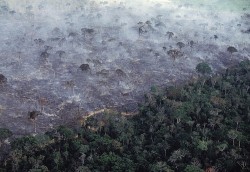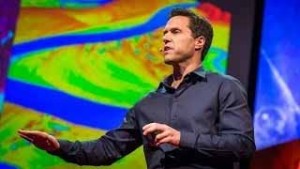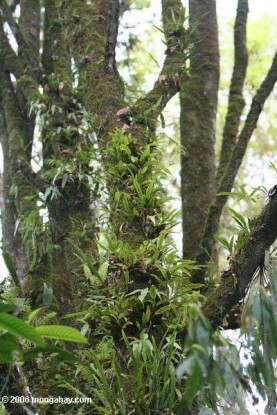
Future of Conservation – Part 2: There is some good news
It is very easy to get discouraged when we read reports about destruction of habitats and the damage to our planet caused by climate change. But there is also some good news. Individuals and organizations are using new technologies to preserve and protect ecosystems.
Being retired is wonderful. I have time to do a lot of reading as well as pursuing my interest in conservation, orchids, and watercolor art. But everything has its down-side. In my case it means that despite my best efforts, many of my orchids still die, they don’t always bloom when I am ready to paint, and in all the reading I do I may encounter articles that are quite discouraging.
Just before writing last month’s Conservation Update article (The future of Conservation –Part 1) I had just read an article about a long time environmentalist and activist who had decided to give up on his activism and join the many who believe that it is too late, and that “…human civilization is entering the first stages of a collapse from which no valiant activism, alternative energy, or utopian technology can ultimately save it.”
Finding reasons to remain optimistic about the world’s ecology
I admit that at first those words depressed me. But the more discouraged I got, the more I needed to remind myself that the human experience is to survive. The environmental problems we have today can be the source of hope for the future, rather than a predictor of the future. The key concept we must keep in mind is that everything is connected. The more good things we do and the more habitat we protect, the more variety of life we save on the planet. And that brings me to what we all are particularly interested in – conservation of orchids. We all know that we can’t conserve orchids without first conserving the environment in which they thrive and on which they depend.
Here is the good news: In my reading on conservation I am constantly surprised by how much effort and brainpower are currently devoted to solving environmental problems. Much of this work is not widely reported. Perhaps it is not considered entertaining or newsworthy by the media. As a result, the majority of the public hears little about it. No wonder so many of us are feeling discouraged.
At our next GNTOS meeting (November 1) I will be giving a talk on conservation in which I will discuss some of the work currently in process by various conservation organizations. Here is a sneak preview:
Many people and organizations are working hard to save our environment
 In a TED talk by Greg Asner he demonstrates how he is able to map forests using both lasers and spectrometers. These high-tech methods allow him to produce 3-D images of the forests, thereby showing the health of the canopy. The healthier the canopy, the greater its ability to absorb carbon dioxide. This aerial technology is particularly helpful in places like the Amazon, which is large and difficult to traverse. The spectrometers reveal a wealth of information. For example, they provide a way to accurately measure the amount of clear-cutting that has been done. In addition, they can detect the chemical makeup of the soils and point authorities to sources of illegal mining. Mining can be just as detrimental to the health of the forest as clear cutting. In the past it was quite difficult to detect cases of illegal mining because the canopy provided such an effective cover. Ordinary aerial photography was mostly useless in this endeavor.
In a TED talk by Greg Asner he demonstrates how he is able to map forests using both lasers and spectrometers. These high-tech methods allow him to produce 3-D images of the forests, thereby showing the health of the canopy. The healthier the canopy, the greater its ability to absorb carbon dioxide. This aerial technology is particularly helpful in places like the Amazon, which is large and difficult to traverse. The spectrometers reveal a wealth of information. For example, they provide a way to accurately measure the amount of clear-cutting that has been done. In addition, they can detect the chemical makeup of the soils and point authorities to sources of illegal mining. Mining can be just as detrimental to the health of the forest as clear cutting. In the past it was quite difficult to detect cases of illegal mining because the canopy provided such an effective cover. Ordinary aerial photography was mostly useless in this endeavor.
 In order to make the important changes needed to save ecosystems, we need good information. We are now getting ever better data on the amount of destruction going on, and what the negative impact will be. With this information in hand, the leaders of the world are in a better position to make decisions that will halt and possible begin reversing the process. As the world governments meet in Paris next month to map plans for reducing carbon emissions, focus will soon turn to deforestation, which is a greater hazard to the environment than cars, trains, ships and planes.
In order to make the important changes needed to save ecosystems, we need good information. We are now getting ever better data on the amount of destruction going on, and what the negative impact will be. With this information in hand, the leaders of the world are in a better position to make decisions that will halt and possible begin reversing the process. As the world governments meet in Paris next month to map plans for reducing carbon emissions, focus will soon turn to deforestation, which is a greater hazard to the environment than cars, trains, ships and planes.
Not only is technology improving, but society’s perspectives are changing. Consumers are beginning to pressure the producers of commodities such as palm oil to make them more rainforest friendly. France had even wledge is power. We know, for example, that palm oil plantations are responsible for the loss of a great deal of rainforest. Every time we choose a product that contains less palm oil than a similar product, we are voting with our dollars; we are helping to reduce the demand for palm oil. Every time we make a decision to forego a meal containing beef, opting instead for plant-based protein, we are reducing the demand for soy.
The world’s demand for beef has caused the loss of huge amounts of rainforest habitat, which is being clear-cut and used for growing soybeans, which are in turn fed to cattle. It is absolutely the most inefficient, destructive and unhealthy way for us to nourish ourselves. Surely we can do better.![]()